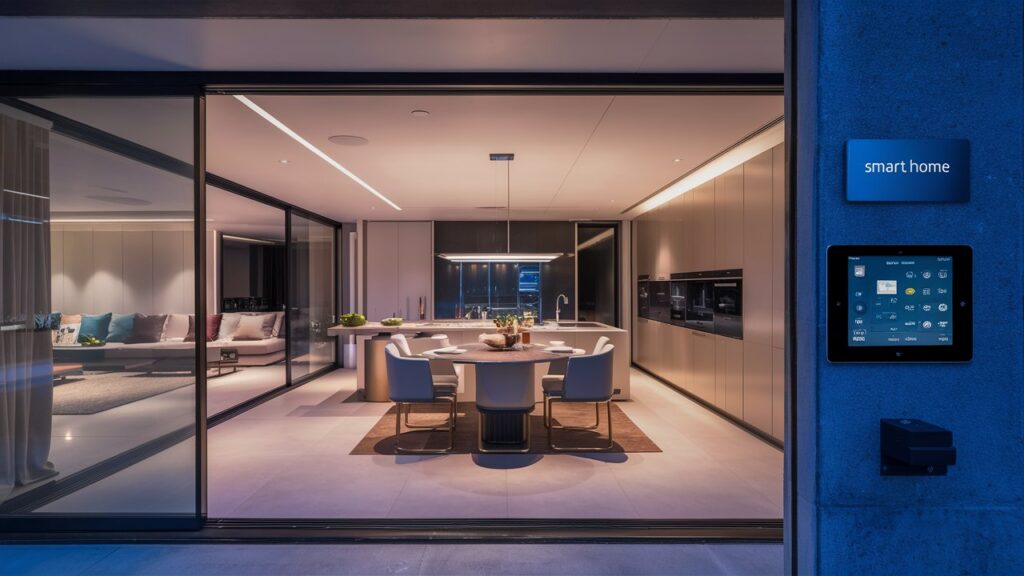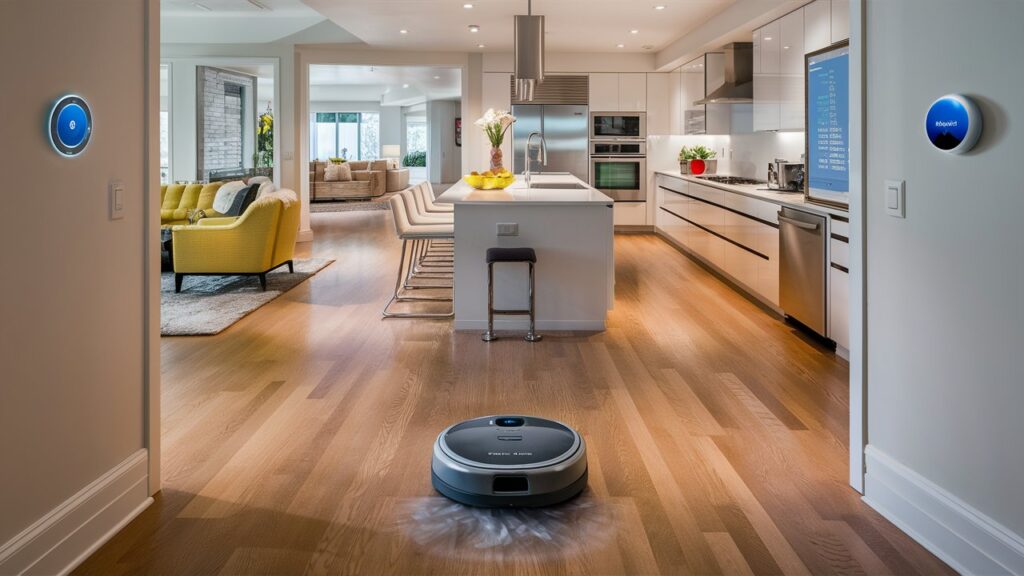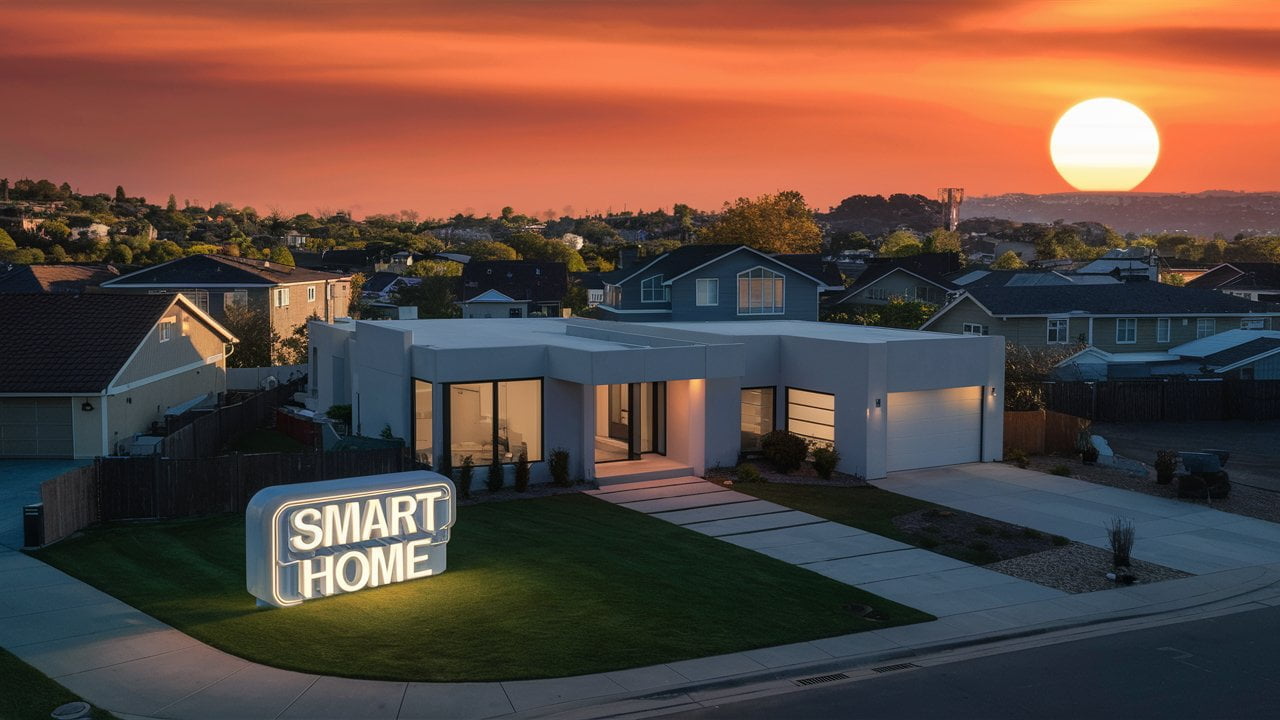Have you ever dreamt of living in a home that anticipates your needs, adjusts the lighting to your mood, and even brews your coffee before you ask? If you are feeling overwhelmed and don’t know where to start setting up your smart home because there are so many different devices and brands, we are here to help you. This comprehensive guide will navigate you through the world of smart homes, from core concepts to the coolest gadgets, ultimately empowering you to create your own connected living haven.
Smart Home 101
Before we get to the specifics, let’s clarify what a smart home truly is. Imagine a network of devices, appliances, and systems built on the concept of the Internet of Things (IoT). These devices communicate with each other and can be controlled remotely or through automation. This interconnected web creates a seamless and personalized smart home experience.
However, smart homes aren’t just about convenience. They offer benefits like:
- Energy Efficiency: Lights that dim automatically and thermostats that adjust to save energy.
- Enhanced Security: Smart locks, cameras, and motion sensors for peace of mind.
- Accessibility: Voice-controlled environments for those with mobility challenges.
- Personalized Comfort: Set the mood with voice-controlled lighting or wake up to your favorite music.
Building Your Smart Home: A Step-by-Step Guide
1. Start with a Need, Not a Gadget
It’s tempting to jump on the latest smart home trends, but a successful smart home starts with identifying your goals. Do you want better security by having smart doorbells with cameras, locks, and motion sensors? Simplify daily routines by setting smart lighting, thermostats, and plugs that allow you to control your home environment remotely or through voice commands? Enhance entertainment with a smart speaker and voice controls? Think about what aspects of your home you’d like to automate and prioritize the features that would be most beneficial to you. This will help you decide which devices to invest in first and how much you’re willing to spend. Understanding your goals will guide your smart home journey.
2. Choose a Smart Home Platform

The smart home platform acts as the decision-making center and guiding force of your smart home. It’s the software system (app or interface) you use to control your devices, set automation, and manage your smart home environment. You can think of it like the mission control that receives information and sends instructions to your devices to work together seamlessly. You can control multiple devices and create automation routines. Without a central platform to guide your devices, you’d be stuck managing each device individually through its own app, which can quickly become a chaotic mess. Some popular options that can act as your smart home guide include Amazon Echo, Google Nest, Apple HomeKit, and Samsung SmartThings.
3. Pick Your Smart Devices

The options are extensive, from smart lights and thermostats to voice assistants and security cameras. Consider factors like compatibility with your chosen platform, features, and budget. Start with a few essential devices, like a smart plug or light bulb, to getting know the smart home concept without a large investment. You can gradually expand your smart home ecosystem from there.
In the context of connected living, these devices all work together to create a more automated and responsive home environment. For example, you could set up a routine so that your lights turn on automatically when you come home in the evening or your thermostat adjusts the temperature to your preference. By adding a few smart devices to your home, you can start to experience the benefits of connected living. Let this guide serve as your starting point in exploring the world of smart home technology.
4. Secure Your Network
With interconnected devices comes the responsibility of ensuring cybersecurity. A network of smart devices opens up potential vulnerabilities that hackers can exploit. To protect your connected living experience, take these essential steps:
- Use complex passwords that are difficult to guess for your Wi-Fi network, smart home platform, and individual devices. Avoid using default passwords and never reuse the same password across different accounts.
- Enable Two-Factor Authentication whenever possible. This adds an extra layer of security by requiring a second verification step, like a code sent to your phone, in addition to your password.
- Regular Firmware Updates: Keep the firmware (software) of your smart home devices up-to-date.
- Secure Wi-Fi Network: Use strong encryption protocols like WPA3 for your Wi-Fi network, change the default network name (SSID), and disable remote access to your router’s settings.
- Beware of Public Wi-Fi: Avoid connecting your smart home devices to public Wi-Fi networks, as they can be less secure. If you need to use public Wi-Fi, consider using a virtual private network (VPN) for added security.
By taking these proactive measures, you can create a more secure environment for your connected living experience, protecting your privacy and ensuring peace of mind.
Now that you understand the smart home concept and have identified your needs, the next important step is choosing the right platform. This platform will act as the foundation, a central nervous system of your smart home ecosystem, allowing you to connect and control your devices seamlessly. Dive deeper into this crucial decision in our next article, ‘The Ultimate Guide To Choosing A Smart Home Platform,’ where we’ll explore popular options like Amazon Alexa, Google Home, and Apple HomeKit, helping you find the one that best suits your needs and ecosystem.
FAQs
Are smart homes expensive to set up?
The cost of a smart home varies depending on the devices you choose and the complexity of your setup. You can start with a few budget-friendly devices and gradually expand as needed.
Do I need technical expertise to build a smart home?
Most systems are user-friendly and designed for easy setup. However, some advanced setups might require a bit of technical know-how.
Are smart homes safe from hackers?
With proper security measures, like using strong passwords and keeping firmware updated, your smart home can be safe.
Can I control my smart home when I’m away?
Absolutely! Most smart home platforms offer remote access through mobile apps, so you can control your devices and monitor your home from anywhere in the world.
What are some popular smart home devices to start with?
Some popular starting points include smart lights, smart plugs, smart thermostats, and voice assistants like Amazon Echo or Google Home.





